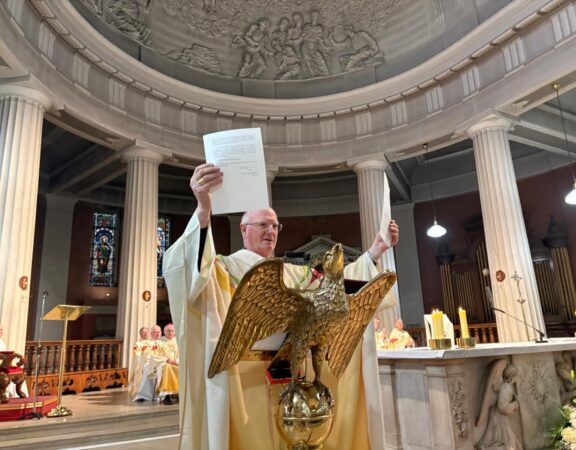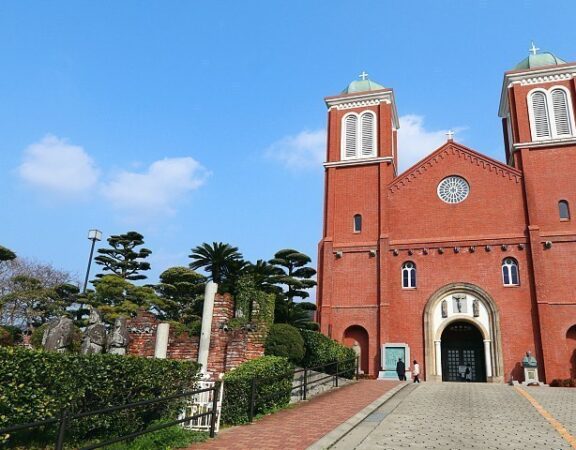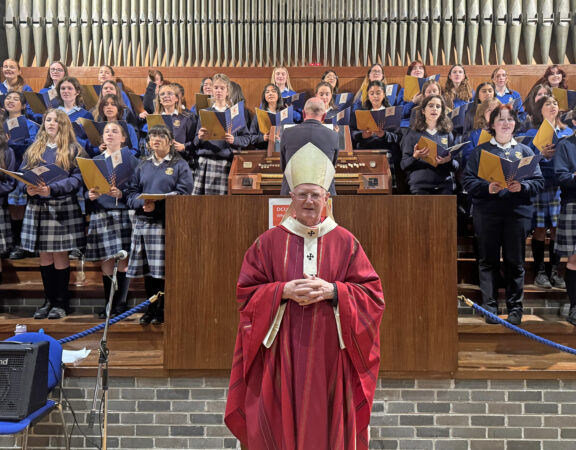Sixth Sunday of the Year 2015
CENTENARY CELEBRATIONS OF THE
CHURCH OF THE HOLY NAME BEECHWOOD AVENUE
Homily notes of Archbishop Diarmuid Martin
Church of the Holy Name, Beechwood Avenue, 15th February 2015
“An anniversary celebration is always an occasion both to look back and to look forward. We look back and give thanks to God for the many moments of grace that we have received in this Church over the past one hundred years. But we do not look back in simple nostalgia; we look back at history to learn, so that we can also look forward to facing the challenges which this parish community, and the Church on a wider level, will encounter in the world of today and of tomorrow.
We do not look back in simple nostalgia; we know that history bears many lessons for understanding the future. History can help put into focus what is really important and truly forward-looking; history can help us see more clearly our recurrent failings, as individuals and as a community; history pinpoints events and people of past generations who can serve as models for any generation; history can show how the story of a parish community is one of stability, symbolised by the unchanging beauty of a Church building; history also chronicles change and adaptation represented by a community which discerns what the challenges of the day are and how they can be addressed by a faith which is not stagnant or of simple repetition, but a faith which is present and active and transforming in any society.
I congratulate all those who have been involved in the wide range of celebrations which are taking place during this centenary year, in particular those who worked on the centenary History and Guide and those who worked on the cultural and liturgical celebrations and the new hymns. I congratulate the Parish Council and those responsible for the many on-going activities and programmes in the parish. I congratulate those who look after the Parish Website.
Websites and social media are signs of how our society is changing today. In the early years of the twentieth century – the time in which the Church was being planned and built – Dublin was changing. In 1911 King George V came to Dublin on a visit and thousands came out to greet him. Yet at the same time a new nationalist culture was emerging and hopes were in place for some form of Home Rule.
A newly emerging Catholic elite of the professional classes was growing, taking their rightful place in Irish political social and economic culture. New areas of the city began to emerge. Archbishop William Walsh was determined each such community should be embellished with a Church worthy of its surroundings. This Church of the Holy Name, which emerged in that context, is a building which utilized what was truly best in Irish artistic ability and raw materials at the time. It is a Church building which has stood the test of time and has been well conserved and enriched in its artistic and liturgical style over the years.
The community too is called to adapt and to bring the challenge of the Christian message to our changing society. Christian belief is not just as a form of personal piety but a message which can and must influence the overall culture of our city and our times. Faith is not simply something that remains in the private sphere of individuals; the Church, on its part, is not a closed comfort-zone of the like-minded, who live isolated from the world and from the challenges which men and women and young people face in finding meaning and hope in their lives and finding a society which accompanies them in that challenge. The Church must reach out in its witness to the message of Jesus.
The Jesus we encounter in today’s Gospel helps us to understand how we are called to bring his message to our society today. It shows us a Jesus who lived within the cultural realities of his time and was respectful of them. He told the leper who was cleaned to scrupulously observe all the rituals required by the law. But it also shows us a Jesus who was free, and who wished to bring the men and women he encountered beyond the day to day cultural norms of his time and the security that the appeared to bring with them.
Jesus does things which shock the good synagogue-going believers of his time. He has no difficulty in encountering a person, who it was considered correct to avoid as unclean, but who Jesus saw as a person needing healing.
The norms which stressed that the leper should be ostracized were not simply there because it was feared that his disease was contagious. They were not just prudent norms of public health. We do not know exactly if the disease from which the man suffered was the leprosy we know of today. The fact that there were norms of what to do when someone had been cured of the disease would tend to indicate the opposite, as leprosy at that time was certainly incurable.
The person who encounters Jesus was ostracized in the first place, not because he was a public health risk, but because distorted religious views had turned him into a social outcast, considered a sinner by those who set themselves up as models of true religion.
Distorted religious view inevitably turns the lives of those who espouse them away from what is authentic in religious belief, which is the search for true authenticity in life and relationships. When Jesus was asked by the leper to speak with him, he goes directly towards him. He does not enter into discussions of what disease the man may have; Jesus simply touches him; he comes close to the man in what he is. Curiously this very fact of touching the man would have meant that Jesus too had become unclean and should be shunned by others.
The encounter with Jesus brings healing and it brings healing, the Gospel reminds us, instantly. Jesus, however, tells the man to go through with the prescribed rituals. The man was not simply to be cured; it was important that the social outcast was returned to be a full member of the community and to realize his dignity within that community.
The community of believers in Jesus Christ can never be one which is closed within itself or even one which does the occasional good deed. It is a community which believes in the contribution that faith in Jesus can bring to our world. It is not a community which seeks to impose belief on others, but it is a community which by its actions can attract people to Jesus and his teaching. The message of Jesus is a message which today can still heal the wounds of society. The believing community must be a place where we identify where our society needs healing, so that the men and women and the children of our time can live their humanity authentically and can do so within a society which welcomes them and offers them fulfillment and rejoices in the healing.
The parish community of tomorrow will be one that is different to the one which generously and enthusiastically worked to have this church built. It will be different to the one most of us grew up in. It will be a more missionary Church: a Church which reflecting on the life and mission of Jesus as we find them in the Scriptures, will deepen its knowledge of him. It must never be an inward-looking, small minded community. It must be a community which will build up families capable of transmitting the faith to the coming generations. It must be a community of men and women who pray and learn to understand prayer and its place in life. It must be a welcoming community, never building up norms of social ostracism. It must be a community happy to share the joy of the Gospel.
Despite Jesus specific instruction not to speak about what happened, the man who was cured immediately went back to his community sharing the joy of having been healed by Jesus. The officials of the establishment to whom he turned for ritual recognition of his cleansing seem not to have been touched by what had happened and simply carried out their responsibilities dutifully without their hearts being changed.
The temptation remains for all of us – especially those of us in leadership in the Church – to become fossilized in our religious identity and devotion and practices, rather than allowing our faith to unnerve us, to free us from inhibitions and to witness to the joy which our belief brings us. Catholics can become timid about speaking of their belief. When that happens, our timidity means that we banish Jesus, to paraphrase the final part of our Gospel reading, “outside in places where nobody lives”. The message of Jesus belongs precisely where people live, especially where people life in anguish and emptiness.
We look back at one hundred years of a believing community nourished within this building. We must go away renewed in our commitment to the life-giving and healing message of Jesus, renewed in ourselves, renewed as a believing community, renewed in our commitment to bring that healing and liberating message of Jesus to those around us.” ENDS







